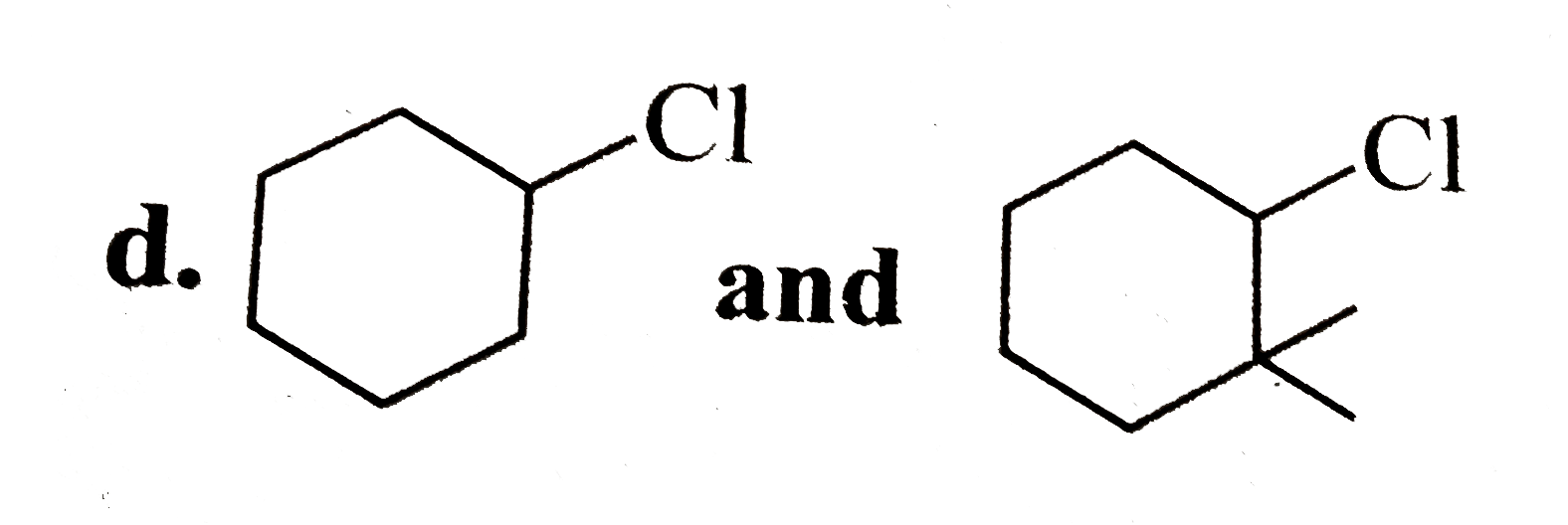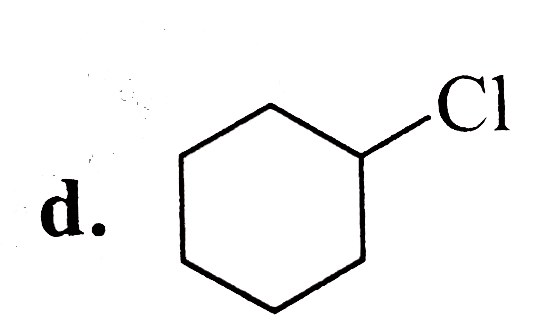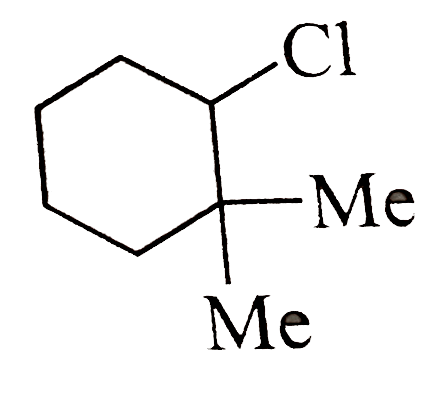Give the most reactive substrate in each of the following pair with ӨOH ions under SN2 conditions.
(a) C2H5I and C2H5Cl
(b) p−Br−C6H4CH3 and PhCH2Br
(c) CH3Cl and CH2Cl2
(d) 
(a) C2H5I (IӨ is a good leaving group)
(b) PhCH2Br (BrӨ is lost easily, not attched to the ring)
But in the p−Br−C6H4CH3,BrӨ is not removed easily due to resonance stabilisation (Br is attached to the ring).
(c) CH3→Cl (I+ effect makes more polarisation and Cl can be removed easily). but in Cl←CH2−Cl, due to -I effect of Cl, other Cl is not removed easily
(d)  (Cl can be removed easily, no resonance stabilisation). But in
(Cl can be removed easily, no resonance stabilisation). But in  Cl is difficult to remove due to the steric hindrance of two methyl groups.
Cl is difficult to remove due to the steric hindrance of two methyl groups.
Topper's Solved these Questions
- ORGANIC REACTION MECHANISMBook:CENGAGE CHEMISTRYChapter:ORGANIC REACTION MECHANISMExercise:Subjective
Explore 19 Videos
- ORGANIC REACTION MECHANISMBook:CENGAGE CHEMISTRYChapter:ORGANIC REACTION MECHANISMExercise:Comprehension
Explore 36 Videos
- ORGANIC REACTION MECHANISMBook:CENGAGE CHEMISTRYChapter:ORGANIC REACTION MECHANISMExercise:Analytical and Descriptive
Explore 6 Videos
- NCERT BASED EXERCISEBook:CENGAGE CHEMISTRYChapter:NCERT BASED EXERCISEExercise:Chemical Equilibrium
Explore 72 Videos
- P-BLOCK GROUP 13 - BORON FAMILYBook:CENGAGE CHEMISTRYChapter:P-BLOCK GROUP 13 - BORON FAMILYExercise:Exercise Archives (Subjecive)
Explore 9 Videos
Similar Questions
Predict the order of reactivity of the following halides with (a) NaI in acetone
(b) aq.alcoholic AgNO3
(i) CH3Br
(ii) C2H5Br
(iii) PhCH2Br
(iv) .
.
View SolutionWhich of the following is a stronger acid in each of the following pairs ?
(a) CH2(Cl)COOH,CH2(F)COOH (b)CH2(Cl)CH2CH2COOH,CH3COOH,CH3CH(Cl)CH2COOH
(c ) CH3COOH,C6H5CH2COOH (d)m−NO2C6H4COOH,p−NO2C6H4COOH
(e)p−NO2C6H4COOH,C6H5COOH (f)m−OHC6H4COOH,p−OHC6H4COOH
View Solution
Knowledge Check
The increasing order of reactivity of the following halides for the SN1 reaction is
I.CH3CH(CI)CH2CH3
II.CH3CH2CH2Cl
III. p.−H3CO−C6H4−CH2ClA(II)<(II)<(I)B(II)<(I)<(III)C(I)<(III)<(II)D(II)<(III)<(I)The following alkyl halidesin the decrasing order of SN2 reactivity , is
1(CH3)3CCl 2CH3Br
4 CH3Cl 4(CH3)2CHClA1>2>3>4B2>3>4>1C3>2>4>1D2>3>1>4
Write the chemical reactions of the following conversions :
(i) CH3−CH2−Cl to CH3−CH2−CH2−NH2
(ii) C6H5−CH2−Clto C6H5−CH2−CH2−NH2
View SolutionWhich one of the following has the lowest boiling point?
CH3Cl
C2H5Cl
C2H5Br
C2H5I
View SolutionPredict the order of reactivity of the folloiwing compoundss in SN1 and SN2 reacations.
a. The four isomeric bromolbutanes
b. I. C6H5CH2Br
II. C6H5CH(C6H5)Br
III. C6H5CH(CH3Br
IV. C6H5C(CH3(C6H5)Br
View SolutionWrite the structure of the major organic product in each of the following reactions :
(a)(CH3)3CBr+H2Oheat−−→
(b)(CH3)2CH−CH(Br)CH2CH3C2H5ONa−−−−−−−→ethanol /heat
(c)CH3CH2Cl+SbF3heat−−→
(d)CH2=CHCH2Br+CH3C≡CNaliq.NH3−−−−→
View SolutionArrange the following compounds in the decreasing order of reactivity towards SN2 displacement reaction and give reasons in support of your answer:
(a) C2H5Br,C2H5I,C2H5Cl
(b) (CH3)3CBr,CH3CH2CHBrCH3,CH3CH2CH2CH2Br.
View SolutionWrite chemical equations for the following conversions:
(i)CH3−CH2−ClintoCH3−CH2CH2−NH2
(ii)C6H5−CH2−ClintoC6H5−CH2−NH2
View Solution
